Collaborative Innovation in Medicine with Tim Raderstorf of Ohio State University
Untold Stories of Innovation
“Be kind to yourself during times when you are really uncomfortable because that's when the growth is occurring—that's when you're going to be your most creative and impactful.” - Tim Raderstorf, Chief Innovation Officer at The Ohio State University College of Nursing
From today’s episode you’ll learn:
Why do stories matter to the innovation process? What values can be instilled in innovators who share stories? How do innovation leaders inspire creators to tell and share their success and failure stories?
We speak with Tim Raderstorf, Chief Innovation Officer at The Ohio State University College of Nursing, as well as the Head of Academic Entrepreneurship at the Erdős Institute. To top it all off, he founded the Innovation Studio, a makerspace that democratizes innovation, providing every interprofessional team that pitches their innovation with the funding, tools, and mentorship needed to turn ideas into actions. Tim shares his innovation in medicine story along with stories of other innovative leaders who effectively apply the “yes, and” approach.This approach improves organizations’ ideation rate: a way to measure innovation in companies in which the amount of positive ideas divided by the number of active participants. According to Tim, the higher the ideation rate, the higher your return on investment for innovation. You can connect with Tim on LinkedIn and Twitter.
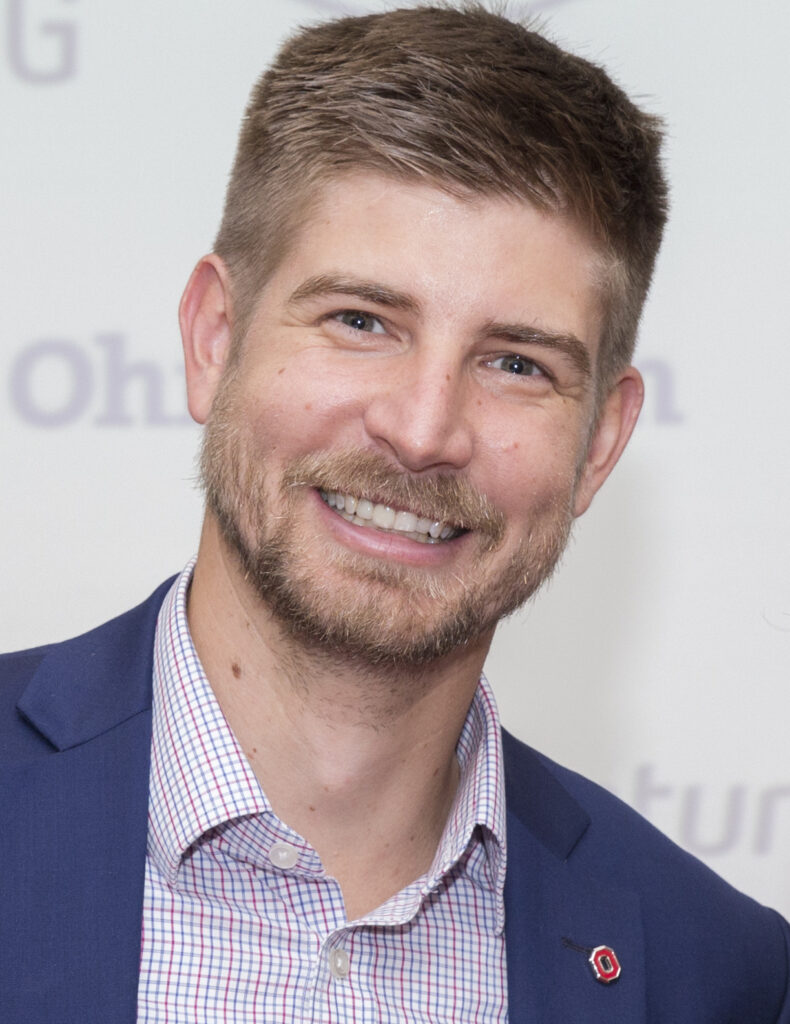
Dr. Tim Raderstorf is the Chief Innovation Officer at The Ohio State University College of Nursing and The Head of Academic Entrepreneurship at the Erdős Institute. From TED talks to textbooks, Tim uses every platform he can find to empower those at the frontlines to change healthcare.As the first nurse to hold the Chief Innovation Officer title in academia, he takes pride in educating the world on the role of the nurse as an innovator. Throughout his career, Tim has founded multiple businesses and has been the first employee for a profitable healthcare startup. His new textbook co-authored with Bern Melnyk, Evidence-Based Leadership, Innovation and Entrepreneurship in Nursing and Healthcare: A Practical Guide for Success, was a #1 new release upon its debut in December 2019.
TRANSCRIPT
This episode, collaborative innovation in medicine is powered by Untold Content’s Innovation Storytelling Training. Increase buy in for your best ideas in this immersive and interactive, story-driven experience. Where your teams refine storytelling techniques for their latest projects, prototypes and pitches—and get inspired by 25 epic examples of impactful innovation stories.
Katie: [00:00:04] Welcome to Untold Stories of Innovation, where we amplify untold stories of insight, impact and innovation. Powered by Untold Content. I’m your host, Katie Trauth Taylor.
Katie: [00:00:19] Our guest today is Tim Raderstorf. He is the chief innovation officer at the Ohio State University College of Nursing. He is the founder of the Innovation Studio at OSU, coauthor with Bern [Bernadette] Melnyk of a book called Evidence Based Leadership, Innovation, and Entrepreneurship in Nursing and Healthcare. He’s, of course, also head of academic entrepreneurship at the Erdős Institute and a TED X speaker. Tim, thank you. I’m so honored to have you on the podcast.
Tim: [00:00:46] So honored to be on podcast, Katie. Thanks for thinking of me.
Katie: [00:00:49] Absolutely. So you are in the academic world. Also in the health care world. Can you tell me a bit about the ways in which innovation is, you know, driving what you do?
Tim: [00:01:03] Sure. So being a nurse, I have been in the nursing profession for 10 years now. And there’s kind of this untold motto of being a nurse, and it’s “see a problem, solve a problem.” And that’s very directly related to the innovation pathway that I see: “see a problem, solve the problem.” So it’s been intertwined within my education and my practice for over the last decade. But it impacts my day to day in a much broader sense now that I’ve moved into this chief innovation officer role college nursing, because my role has shifted from leading innovation or creating innovations, which I still do, but not nearly as much as I lead and empower others to be innovative and democratize innovation across our system. So innovation at Ohio State occurs in many different ways. And we take an incredibly broad lens to what isn’t health, because we believe that just about everything in the world is health. So as we dove in and talk about the things that are going on within our system, you may think that, well, that’s not something you use in the hospital, but it impacts the health and well-being of people on a much broader scale. So we’re taking a very wide lens on what can be constituted as innovation and an even wider lens on what could be constituted as health and health and well-being.
Katie: [00:02:31] I’m so grateful that you brought up the concept of democratizing innovation and obviously coming from a university background.
Katie: [00:02:37] I am also a former university professor and now in the startup world. But.
Tim: [00:02:42] Not saying recovering yet?
Katie: [00:02:43] Exactly. Always, always in my heart. I will be, of course. But I love, you’re really… Your sort of…. You have both… You have one foot in, I should say, in both worlds, really. And I love that. So democratization of ideas and of innovation in particular. That’s a very closely held value for most people who are teachers or professors or leaders in academia. I love your TED talk, and if listeners haven’t watched Tim’s TED talk, please go to YouTube and check it out. It’s the “Participation Trophy Model for Innovation and Why It Works,” which is one of my favorite TED talk titles of all time, Tim. Well done.
Tim: [00:03:25] Thank you. It was like one of 60 that I had to choose from. I decided I was going to go for it.
Katie: [00:03:30] Collaborative innovation in medicine – I’m sure. But what I love about that is you start with the story about identity and the ways in which we can sort of label ourselves in a limiting way. And you say that and I know I’m going long winded here, but this gets back to the idea that innovation should be democratized if it’s not exclusive to only a subset of the population or only those people who are doing it in formal ways or whose job titles include the word innovation. Right. You make this beautiful argument in the TED talk that that everyone innovation must be democratized because people all have this ability to problem solve and look around their current situation that the current work that they’re doing, the current lives that they’re leading, communities that they’re part of and be able to see it through the lens of problem solving.
Tim: [00:04:20] Collaborative innovation in medicine – And you know, what’s the most interesting thing about it is that it’s evidence based, so we know that innovation is most effective when it is done by the people at the front line. Those who have the most intimate understanding of the problem. This comes from research from a professor at Kellogg School of Management named Dylan Minor. And he’s completely continued the study now at M.I.T.. But they look at what’s called the ideation rate, which I talk about in the TED talk. But it’s essentially not just the number of ideas that are generated, because when people hear ideation, they just say, great, let’s let’s come up with as many ideas as we can and we’ll throw them at the wall and see what happens, see what sticks, which is actually, I think, a decent start. But what the ideation rate that Minor refers to is the number of ideas that are generated by frontline staff with a very important “and” after that and the “and” is that those ideas have to be approved by management. So you generate ideas, management buys on, provides the permission of validation, and then you divide that number of the ideas that are approved by the total number of people in the system. And that’s your ideation rate. The higher ideation rate, the higher your return on investment for innovation. So it’s incredibly applicable to the health care professions because we have a particular nurse and we have this large group of frontline workers and you may have 50 to 100 direct reports reporting up to a manager or director. So all these people have these ideas and they’re coming forward. But that manager director may not be at the decision making level of the organization when it comes to budgeting and empowerment. So oftentimes these people are put in situations where they have to make tough decisions and start to default to a “no” when ideas come to them. So it’s incredibly important that organizations structure themselves so that they are empowering those on the front lines to bring their ideas forward and they’re empowering their leaders to say “yes, and” when people come to them with those ideas, so that way the system can capitalize on all the ideation that’s occurring and figure out a way to give both management and frontline staff a way to collaborate together on innovation.
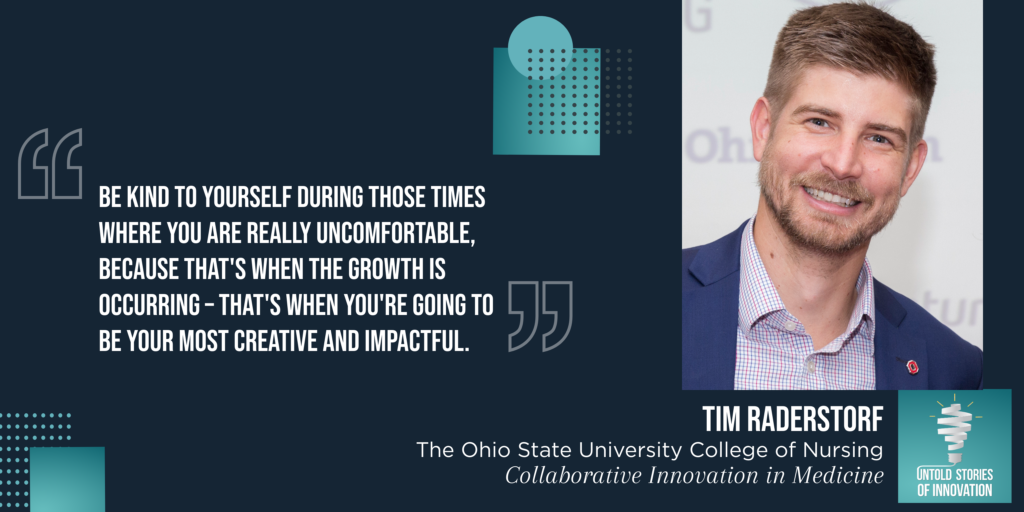
Katie: [00:06:47] Collaborative innovation in medicine – Brilliant. OK. I want to make sure that I understand what you just said, because I think it’s so important. And I don’t think anyone else on the podcast has mentioned this concept of the ideation rate and using it as a measurement of innovation success. I know that it’s impactful and like you said, it’s an evidence based tool or, you know, we call it a validated measure, if you will. But we haven’t talked about it on the podcast. So in order to increase your ideation rate, you need to have management have a cultivated mindset of “yes, and.” The goal is to have more ideas coming from frontline staff that are being approved by management and that are aligned with the expectations and the views that management has of what the organization needs. Right?
Tim: [00:07:35] Mmhm. Exactly.
Katie: [00:07:35] Collaborative innovation in medicine – Brilliant. So I think storytelling has to play a very important role in that. Right. Anytime we see someone on the front lines having to share a big idea or even a small improvement innovation idea with people who are ultimately deciding whether to greenlight or kill that concept, there is always an element of storytelling to that, right?
Tim: [00:07:56] Collaborative innovation in medicine – Good storytelling is perhaps the most important aspect of innovation, because if you can’t evoke emotion through story, then you’re not going to get the person at the end to buy in and get that “yes, and.” So you have to go great with them the what’s in it for me and make that the listener that the person hearing the story understand the value across the system, but explicitly for them. And so that’s what we coach up our innovators and entrepreneurs in is understanding your audience, knowing your audience, and tailoring your message to them so that they understand the wisdom.
Katie: [00:08:33] Collaborative innovation in medicine – Yes, exactly. And so it’s interesting, you know, from a management perspective, I love that advice you gave about having a “yes, and” mindset, trying to build upon the ideas of other individuals who you’re managing or leading. I think it’s also really critical for leaders and managers to be able to articulate their needs, their visions, their objectives, their goals to frontline staff. So, of course, that kind of strategic alignment is going to really get better support to the frontline person who has a great idea and who doesn’t want it to die just because they didn’t align it correctly with whichever, you know, part on the roadmap or strategic plan. It might not be their inability to fit it into that picture that it needs to fit into for management and leadership to say, yes.
Tim: [00:09:18] Collaborative innovation in medicine – Absolutely, Katie. And it allows one other thing that’s really important. It allows for positive deviance. So even if people are working against each other in the system, if it’s positive deviance, that’s OK. So what I mean by this is: your management team, your leadership may have a vision for what’s occurring and there may be people within the front lines that see a better way to do that. And it allows them to push the boundaries of why their methodology may be better, faster or safer, cheaper for the team, for the patients, for whoever is involved. But if you don’t have that message from the leadership about where the direction of the organization is going, then everyone flounders. And it is, you know, move is aimed towards what feels like a moving target at times. Positive deviance is an incredibly important aspect of innovation within the system. And so so having a direction, a mission, whether it be flawed or not, is very important because it allows people to challenge it and test it.
Katie: [00:10:27] Collaborative innovation in medicine – Absolutely. Can you tell us about how this kind of innovation is a little bit different in health care than, say, in other sectors?
Tim: [00:10:36] Collaborative innovation in medicine – Sure. So I like to say that my role as a chief innovation officer in health care is probably the easiest industry to be a innovation officer in. And admittedly, you know, we’re recording this podcast right in the throes of COVID. But up until three months ago, I would say to you, health care is not a dis-ruptable industry. And I still have that belief. But I think I may be more likely to be proven wrong than I was three months ago. But the reason that I feel that way, Katie, is because health care, the industry itself, that what we think of when we go to hospitals or our nurse practitioner or physician clinics or wherever, is 100 percent dependable upon human behavior. And that’s the behavior of the patient. But it’s also the behavior of those who are running the system. And if you’re trying to change a system and it involves massive amounts of behavior change, it’s not going to occur. It’s going to be incremental changes that eventually get you to that point that if you went from from A to D, it would feel disruptive. But because of the C and the B and C that are built in there that are incremental changes to get you there. That is how I view health care as an industry. Being able to be disruptive over the long game, over multiple incremental changes. So with that being the case, you know, I think as a healthcare innovator, you can’t go too far downstream. If it requires massive behavior change. So if you’re going to create a new drug or new therapy that could cure cancer. That’s absolutely something that can be disruptable. And can have a massive impact and go from A to Z. No problem. But because behind that, it’s usually someone writing a different script or making minor changes of behavior. But if you wanted to say, OK, we’re going to instead of having all of our oncology patients come in for weekly visits or monthly visits, we’re gonna shift that all to telehealth and then we’re gonna send a nurse to their house, every other telehealth visit. And then a pharmacist is going to come in between. That would be a massively disruptive behavioral component change to the system, and would take a very long time to get integrated. So there’s a long winded version of saying the things that happen in health care are and the innovations get adopted. I see them usually being innovations that have already been adopted by other industries, like, for example, secure text messaging has just come into the fray in the last two to three years in health care. But the text messaging has been around since, you know, 1999. And people were very comfortable with it. Other industries adapted and used the technology, but eventually got to the tipping point where health care said this is going to get used. We need to find a way to do it more securely. So when I look in health care innovation, I look for clinicians to be driving the innovations that come to light. Those people who understand the problems the most, they’re going to be driving the more disruptive innovations. And then people from the outside, your communication companies, whoever those may be, your health care distribution companies, they’re going to be doing incremental innovation and bringing that back to the system. And that’s likely going to be based off of successes that are occurring in other industries.
Katie: [00:14:13] Collaborative innovation in medicine – You know, I think a lot of your leadership in the innovation space in health care is around identity and helping everyone within the health care system see themselves as having the potential to be innovative. What are your thoughts on nurse led innovation and the role that nurses should and can play in innovation?
Tim: [00:14:35] Collaborative innovation in medicine – So I think, this may be contrarian coming from a nurse, so I don’t love the term nurse led innovation.
Katie: [00:14:43] Collaborative innovation in medicine – Oh, OK. I’d love to hear why.
Tim: [00:14:45] Collaborative innovation in medicine – I love the term innovation. And we don’t call it physician led innovation. We don’t call it pharmacists led innovation, and we don’t call it environmental services led innovation. We don’t call it dentists led innovation. So why are we singling ourselves out as a profession that has already been pushed aside, and although we’re the largest profession in health care, we deliver 90 percent of health care worldwide. And there’s about four times more nurses that are practicing in the U.S. than physicians, which would be the second highest group. We have been placed to the lower end of the totem pole, but we’ve been leading innovation this whole time. Unfortunately, instead of, because we’re not in a position of power, we call our innovations work arounds and then we hide them from management because we don’t want to get in trouble for using tongue depressors and tape in creative ways. So we absolutely are innovators and nurses have been leading it since Florence Nightingale started the profession. But what we need to be doing a better job of is interprofessional innovation and interprofessional collaboration. And if we’re creating something for nurses, then we better be co-designing that with patient care assistants and patients, people that it’s going to be utilized on. If it’s something that’s going to be utilized with physicians, then we need to co-design with them and also bring in the engineering team and utilize each other’s skill sets and not try to be this jack of all trades, but to be this niche leader and innovator and leverage that and those people around us to rise the tide of all. So I’m a big believer and this is the main reason that we democratize innovation. You know, we really see a very large gift to start the Innovation Studio from Gary and Connie Sharpe, who own a company called Health Care Logistics. And, you know, I think they would have been OK with us saying, hey, we’re gonna do this nursing innovation program. But we knew that if we siloed ourselves off and set up a nursing innovation program, that wasn’t going to allow our students, faculty and staff to engage with new people across the system and learn how an engineer thinks about the same problem that a nurse is trying to solve or how a physician thinks about that problem. So when we do innovation, we don’t need to. We don’t need to put on the hat of the nurse or the hat of the physician or the hat of the pharmacist. We need to put on the hat of an innovator, and team member, and we need to have empathy and utilize the concepts of human centered design and design thinking. And that’s where we need to be focused on how we lead innovation, is by doing it collaboratively and collectively and having impact be our number one goal.
Katie: [00:17:33] Collaborative innovation in medicine – And I think I love what you’re saying here. I think in a way what you’re saying is let’s all call ourselves innovators. If you are passionate about this, if this is, you know, let’s not, like you said, hide it or call it a work-around, demean it no matter what profession we’re in. Let’s, do call thyself an innovator.
Tim: [00:17:53] Collaborative innovation in medicine – Exactly.
Katie: [00:17:54] Collaborative innovation in medicine – Yes. Yes. I would love to hear, Tim, some of the stories, the innovation stories coming out of OSU’s College of Nursing or the Innovation Studio or the Erdős Institute.
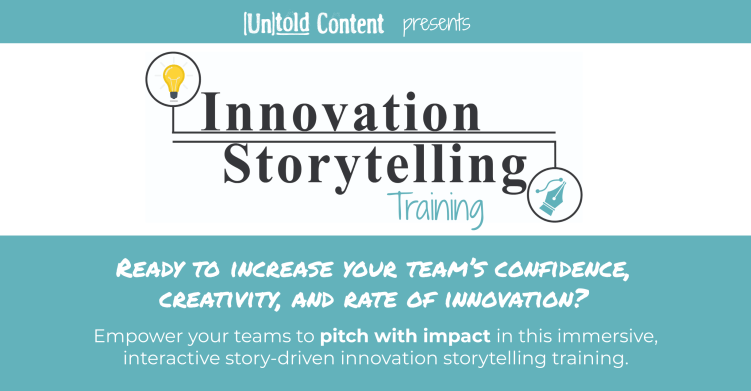
Tim: [00:18:05] Collaborative innovation in medicine – Sure. So let me start with the latter, because this may be the most interesting to you and your background with the Erdős Institute. So as I’m sure you’re aware, the US graduates somewhere between 40 and 60 thousand PhD students per year and there’s about four to six thousand PhD academic jobs for those individuals. So most of these people are never going to have a chance at the dream job that they initially started out to get and find that academic position that they’re hoping for and go tenure track and go out there and change the world. But these are some of the best and brightest and most motivated individuals within our country. And we pull in wonderful people from all over the world to come into the system. So what Roman Holowinsky, who is the founder of the Erdős Institute, started off with, was a series of boot camps that would help PhD students who were ending their matriculation through their program reframe their expertise as data scientists. And we would partner them with large or small to large organizations who are looking to hire data scientists. And together, they would go through this boot camp with their employees and the PhD students, and they’d be able to kind of see if this is the right fit and then have job placement on the back end. And this program has evolved to help, you know, students now at Ohio State, Rutgers, Michigan, all find employment after a tenuous PhD program and doing that outside of the traditional academic realm. But one of the other key components that Roman had envisaged was we shouldn’t only help PhDs find jobs that they love. We should help them create jobs that they love. So that’s what my role is at the Arizona Institute, is to run our entrepreneurship programs as the head of academic entrepreneurship and bring in PhDs, not just from Ohio State, but from, the schools that I mentioned and across the world to explore an entrepreneurial pathway, whether that be with their research or whether that be as a lead scientist, the chief science officer with startups as they’re getting off the ground.
Katie: [00:20:19] Collaborative innovation in medicine – It’s incredible. Yes. So I’m beaming over here. I know that listeners can’t see that, but this is such an incredible thing. If you know, I ultimately went, of course, into industry and in my own way, in an entrepreneurial way. And it was so challenging. I think a lot of academics are trained to see themselves only in academic settings, especially in the humanities, I’ll admit.
Tim: [00:20:43] Collaborative innovation in medicine – Yeah, Katie, it’s back full circle to that. I’m defining myself by what I’m not. Not by what I am.
Katie: [00:20:49] Collaborative innovation in medicine – Exactly. Exactly. So that is it’s really incredible. I love that. I love that innovation story. Thank you for sharing that.
Tim: [00:20:57] Collaborative innovation in medicine – Of course. And then there’s the other amazing things that I can’t believe I get paid to do. One is I’m professor and the master of health care innovation program at Ohio State that we launched about four years ago. And this is a fully online master’s degree on innovation leadership, particularly in health care. So it’s an incredible curriculum. And, you know, we’re bringing in students from now across the country into our – I believe it’s our fifth cohort – that just started last week. So it’s a pretty exciting time to be teaching health care innovation, because as we talked about, in the environment that we’re in right now, there’s so much opportunity and it’s going to be realized by the people who raised their hands and say, I’m willing to take on this problem. So that’s an incredibly exciting thing. And admittedly, we haven’t seen much of the fruits of our labor from that right now.
Katie: [00:21:59] Collaborative innovation in medicine – You’re young. It’s young. Yes.
Tim: [00:22:00] Collaborative innovation in medicine – It’s young, yeah. I mean, and we all started with PPE. And now that PPE is hopefully getting to a safer location for everyone. There’s going to be a lot of new and exciting ideas. And as people understand, COVID more and more, we’re going to figure out things that not only impact COVID, but impact the system and innovation for years to come. So, I mean, admittedly, like when everything hit, we went out, we bought a rack, you know, a storage rack that you can have that you can get at Home Depot. And we bought as many 3-D printers from Micro Center that we could that would fit on that. And we started printing masks and we started printing face shields and we started printing face shield holders.
Katie: [00:22:46] Collaborative innovation in medicine – Yes.
Tim: [00:22:46] Collaborative innovation in medicine – And, you know, basically anything that we could, the ear protectors. And, you know, we’ve been dropping those off at the health system on a regular basis.
Katie: [00:22:56] Collaborative innovation in medicine – And fun fact. We’re headquartered in Cincinnati, not far from you. And Cintrifuse converted its entire startup space into the exact same kind of structure, just filled it with 3D printers and started producing masks and shields as quickly as they could. It’s really incredible. It’s amazing.
Tim: [00:23:13] Collaborative innovation in medicine – I mean, there’s companies all across like one at one of my very companies that a company out of Columbus is Aunt Flow, which provides feminine hygiene products to companies that and they’re organic and sustainable. And it’s just a really wonderful company. But they immediately shifted to making masks for a variety of reasons. But they realized that if they’re selling their products, we’re all B2B. And people weren’t coming to the office anymore than women weren’t going to be getting these products from their employers. They’re going to be purchasing them from home or, you know, through the Internet or at the grocery store or wherever. So they needed to find another revenue stream as well. And it’s a win win for everyone. And it’s been just so inspiring to see the ingenuity and the ability to adapt and pivot of companies that like Centrifuse, I mean, and Aunt Flo both well-funded companies who have had significant revenue streams or had revenue streams. And here they are having to pivot and follow, you know, the entrepreneur methodology that everyone says that you have to do. They’re doing it so much further downstream than anyone ever thought that would be the case. But it’s great to see their flexibility and their adaptability in the situation. So I applaud them and all these companies that are doing whatever they can right now, not just to stay afloat, but to solve a big problem.
Katie: [00:24:42] Collaborative innovation in medicine – Yes, exactly. I think, you know, the crisis is devastating and it’s you know, it’s going to cause so much harm and at a personal level. At a community level. A global level. But at the same time, I think when we’re all aligned with the same problem in our minds and in our hearts, incredible innovations can happen. And I think that the example of the work that you’re doing, your teams are involved in and the ones that you’ve already shared from other sectors is all evidence of that.
Tim: [00:25:16] Collaborative innovation in medicine – Yeah, it’s – this will be a revolution. I’m not sure what it’s going to be called, but this is forcing people to be more creative, more resourceful than we’ve ever had to be before. And when those things occur, that’s the perfect recipe for innovation and exponential growth. So I am incredibly saddened by what’s going on. You know, wouldn’t have wished this upon anyone. But the silver lining on the back end of this is what is going to be birthed from this.
Katie: [00:25:55] Collaborative innovation in medicine – I couldn’t have put it any better. Tim, I’m so grateful for these stories, for this conversation and the methodologies, the theories that you’ve shared as well. I’m so grateful that you made time to be on the podcast today. Is there any other advice that you would like to give to all of us innovators out there?
Tim: [00:26:12] Collaborative innovation in medicine – Yes. Don’t wait for a permission slip. You have it already. So go out there and get started. And then be kind to yourself through your failures. The greatest successes that have occurred in my life have been not the results of what I’d say [were] catastrophic failures, but things that I had to wait a lot longer for than I thought I was going to. So be comfortable in that uncomfortable phase where you’re waiting, knowing that growth and comfort don’t coexist. So if you’re feeling comfortable, you’re probably not growing and it may be time to push yourself or to bask in it and enjoy that lack of growth and have some time to just breathe. But be kind to yourself during those times where you are really uncomfortable, because that’s when the growth is occurring. And that’s when you’re going to be your most creative and your most impactful.
Katie: [00:27:06] Collaborative innovation in medicine – I know that innovators and professionals everywhere are taking those words to heart. Whether you’re a business owner or in a business that’s struggling or if you’re fearful or unemployed, even at this time, I really hope that you take those words to heart and continue to be patient, work hard, continue to think creatively and don’t lose hope. Tim, thank you. This has been an incredible conversation and I’m so pumped to continue following the Innovation Studio and OSU in general, the Nursing Innovation Program. How wonderful. And of course, the Erdős Institute. That speaks directly to my heart. And I’m so grateful that you were here on the podcast. Thanks for joining us.
Tim: [00:27:47] Collaborative innovation in medicine – Katie, it’s my pleasure.
Katie: [00:27:49] Collaborative innovation in medicine – Thanks for listening to this week’s episode. Be sure to follow us on social media and add your voice to the conversation. You can find us @untoldcontent.
You can listen to more episodes of Untold Stories of Innovation Podcast.
*Interviews are not endorsements of individuals or businesses.

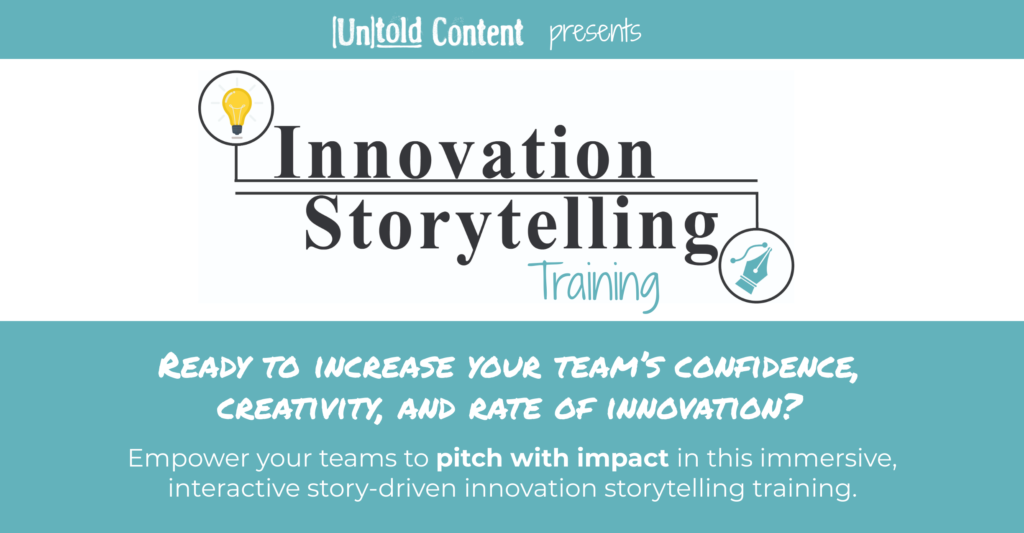
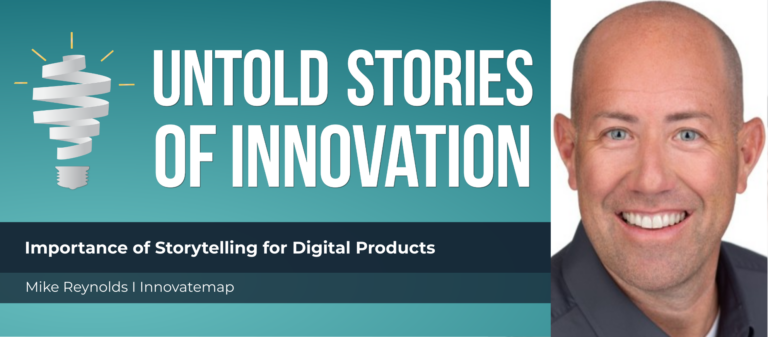
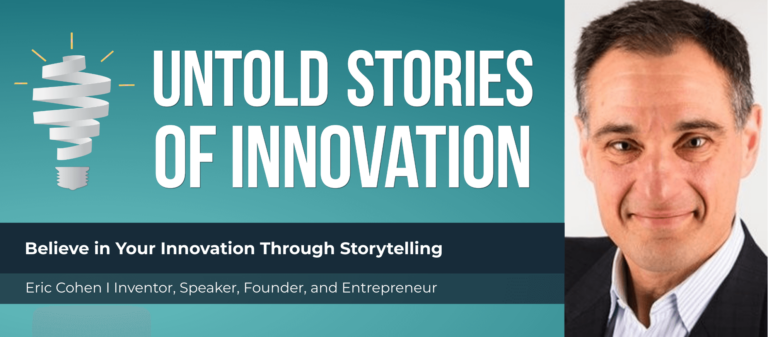
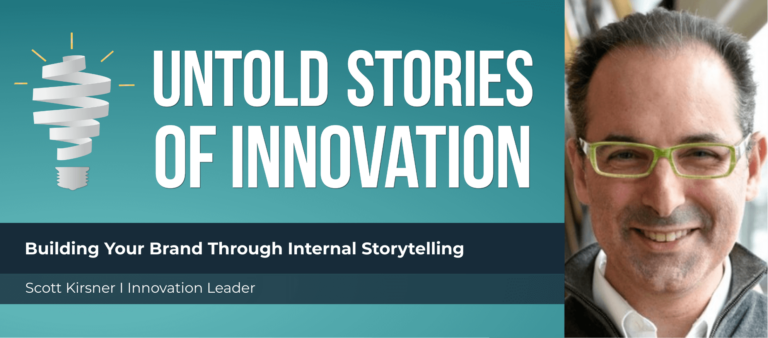
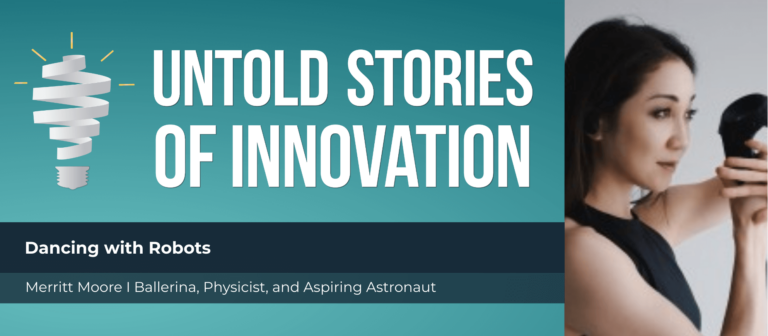

One Response
I have read this article. it’s really informative. thank you for sharing. I hope I will fine more in the future.